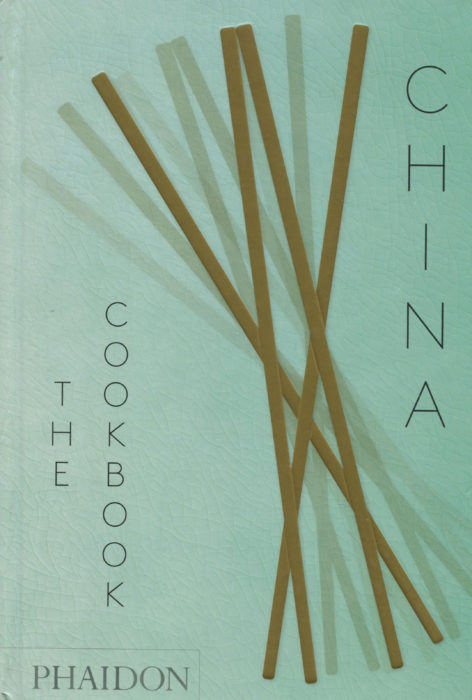
Sometimes a cookbook, however complex, can be described in a single word. Like, magnificent. Or, maybe, encyclopedic. I think the best singled word description for China: The Cookbook is actually hyphenated: must-buy.
Chinese food is one of the top three or four cuisines on the planet. [No, I’m avoiding all Italian versus French discussion here!] So much of what we eat around the world has Chinese origins or influence. And, Chinese food sets the standards for quality and beauty of presentation. It’s more than food. It’s art.
In over seven hundred pages, over 650 recipes, art truly is on display in this wonderful book. The authors, Kei Lum Chan and Diora Fong Chan, are Chinese culinary experts. This is not their first book, but this is surely their masterpiece.
What’s the challenge when you go to a Chinese restaurant? The menu, of course. That menu that goes for page after page. You lose track, you lose count. You could almost do that here, too, in the pages that radiate flavor. There must be a dozen recipes for fried rice, crab is everywhere, meatballs and spareribs. It’s all here.
Actually, there are three classes of recipes in China: The Cookbook. At least for Americans. First, there are the old friends we know: Pot Stickers, Spareribs, Hot and Sour Soup. Then, there are recipes that you may not have tried but, after you do, will embrace as friends, too: Steamed Grouper, Drunken Chicken, Duck Casserole. And then, last, there are some recipes here that prove this book is quite, quite authentic: Pork Lungs And Apricot Kernel With Snow Fungus, Pig’s Heart With Scallion, Stir-Fried Pig’s Tongue, Ginger And Vinegar Trotters. These final recipes are, I am certain, delicious, I may summon up the curiosity to try them, but I am happy to let you be the first to cook the trotters. There’s so much else here that I, a bit of a food coward, am going to repair to my beef and my noodles and my eggplant.
The book has eight primary food chapters, our usual suspects:
- Appetizers and Salads
- Soups
- Fish and Seafood
- Poultry
- Meat
- Vegetables, Tofu and Eggs
- Rice Congee and Noodles
- Desserts
There is an introduction detailing the history and the breadth of Chinese cuisine. Each recipe is identified for the region it comes from and you are told about the preparation and cooking time.
Ah the times. I tend to consider Chinese food to be healthy fast food. Goodness, my fan-tailed shrimp are deep-fried in a minute. And the stir fries seem to take just seconds in that very hot wok. There are the spices, too, so the food is always fast and hot.
Sometimes fast and hot. And sometimes not. The Steamed Grouper takes a full 12 minutes to steam but it is not spicy. Some ginger, some scallions, and soy sauce altered with fish sauce and sugar. But the delicacy of the fish is respected.
On the other hand, if you want Drunken Chicken tonight, you better have started yesterday. This dish needs to marinate for 26 hours before a final half hour of cooking. That long marinating time results in a flavor that is described as bold, deep and complex in taste.
It is this range of recipes that makes China: The Cookbook such a resource: fast or slow, simple or spicy, meat or tofu. If you have an ingredient you want to use, say some pork, then just open this book and consider your array of choices: there are almost 200 recipes here that use pork, as an element or as the focus. China is a huge and ancient country with perhaps the greatest culinary history on the planet. China: The Cookbook is your best guide to this enchanting, delectable diversity.
Over the next few weeks I’ll be posting some recipes from China: The Cookbook. The Drunken Chicken, the Pot Stickers, and that Steam Grouper. Here’s the photo of the fish. I can’t wait. You should not either.
